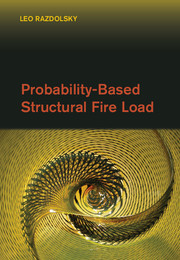Description
Probability-Based Structural Fire Load
Author: Razdolsky Leo
This book introduces the subject of probabilistic analysis to engineers and can be used as a reference in applying this technology.
Language: English
Subjects for Probability-Based Structural Fire Load:
Approximative price 143.25 €
In Print (Delivery period: 14 days).
Add to cart
Publication date: 08-2014
350 p. · 18.2x26 cm · Hardback
350 p. · 18.2x26 cm · Hardback
Description
/li>Contents
/li>Biography
/li>
In the structural design of airframes and buildings, probability-based procedures are used to mitigate the risk of failure as well as produce cost-effective designs. This book introduces the subject of probabilistic analysis to structural and fire protection engineers and can also be used as a reference to guide those applying this technology. In addition to providing an understanding of how fire affects structures and how to optimize the performance of structural framing systems, Probability-Based Structural Fire Load provides guidance for design professionals and is a resource for educators. The goal of this book is to bridge the gap between prescriptive and probability-based performance design methods and to simplify very complex and comprehensive computer analyses to the point that stochastic structural fire loads have a simple, approximate analytical expression that can be used in structural analysis and design on a day-to-day basis. Numerous practical examples are presented in step-by-step computational form.
1. Introduction; 2. Introduction to probability theory; 3. Random processes; 4. Very fast fire severity: probabilistic structural fire-resistance design; 5. Fast fire and life-cycle cost analysis; 6. Medium fire severity and thermal-diffusivity analysis; 7. Slow fire severity and structural analysis and design.
Leo Razdolsky has more than fifty years of experience in structural engineering, including the design of high-rise and mid-rise buildings, field inspections, and construction management. His specialty projects include stadiums, cable structures, exhibition halls and pavilions, restoration and rehabilitation of buildings, power plants, cooling towers, and bridges. He also has experience in computer modeling, wind-tunnel-testing analysis, dynamic analysis of structures, seismic design, and complex-foundation-systems analysis and design. Dr Razdolsky has been teaching various structural engineering courses for more than fifteen years at the University of Illinois at Chicago and at Northwestern University. For the past ten years, he has been conducting research on the analytical methods of obtaining the structural fire load and on high-rise building designs subjected to abnormal fire conditions. He is currently a member of the Fire and Safety Working Group at the Council on Tall Buildings and Urban Habitat (CTBUH).
© 2024 LAVOISIER S.A.S.



